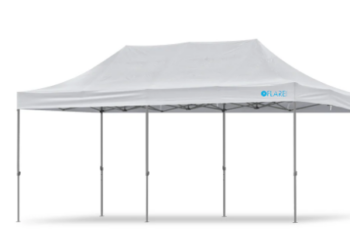Whether you run a new photography business, have a grocery store, or run any other small business type, it is essential to have a good website to ensure success in this internet and e-com era. There are many ways now to get a good website, both free and paid. Suppose you are planning to build a new website for your startup or planning to make the existing one more functional here. In that case, we will discuss a few steps to get started with a small business website to compete in the online marketplace effectively.
First, Get A Good Domain Name
You may have done a lot of research and brainstorming to name your business, right? Similarly, your domain name or website address should also be given careful consideration. Your website must also impact the users in terms of its representation of your business, usability purposes, and a good value for SEO (search engine optimization).
Here are some key considerations to make while choosing a domain name:
- Make it easy to spell and remember. Do not just end up is any made-up, slang, or esoteric terms.
- Keep it short and simple to remember and relate.
- Use a proper extension. If you run a business, then keep it a ‘.com’ domain name. Based on purpose, you may also use other extensions like .edu or .org, etc.
- Avoid any hyphens or numbers in the domain name. These will make it hard to remember and comprehend.
- Do thorough research on the domain name. Check if a similar address already exists. You may search on reference websites like USPTO.gov to ensure there are no registered trademarks on the name you have chosen.
- Avoid any nonsensical or coined names thinking it will attract. Always choose names that convey a meaning so that people can easily relate it with what your business is.
- Make sure you choose an SEO-friendly URL. Try to have website URLs with keywords or geo-location, if possible.
- Check for the price and ensure that you can purchase your desirable website name at a reasonable price.
2. Go for Secure, Scalable, And Well-Supported Web Hosting
The website hosting service provider offers the needed server space and technologies necessary to host and display a website on the internet. You build the website to store the page on the server and connect the domain name to the hosting service to view the website by keying in the address through a browser.
There are various types of hosting services ranging from free to $500 or more per month. The hosting service cost may vary based on your server utility and the kind of technology you choose. Sometimes, you may get a fair discount on purchasing a yearly plan compared to monthly or short-term plans.
Some essentials by Flosum to consider the best web hosting services:
- Even though it is easy and cost-effective to get shared hosting plans, it is not always advisable. In this mode of hosting, you are sharing server space with other clients, which may significantly reduce your website’s performance. If there is another weakly built website hosted on your same server, which is being hacked, your website may also get infected.
- If your budget allows, dedicated hosting is the best approach to take. In this case, you can avail of all the server resources and ensure a high-performing site. However, it may cost around $200 to $2,000 a month based on the disk space. So, virtual private server or VPS hosting is ideal for small businesses to start with, in which the cost is about $20 to $50 a month.
- Ensure that your hosting provider offers dedicated call or chat support to answer your queries quickly and have dedicated technical support professionals assigned to you to contact. Email support usually takes a long time to resolve.
- Check out if they offer you an easy to manage user interface (i.e., cPanel or control panel hosting) to access your server. With this, you may not have to use the terminal commands to access your server contents or to make any changes.
3. Usage of a CMS
You may use a good content management system (CMS) to build and manage your web portal now. A good CMS like WordPress will let you easily build your website and manage its content. The most reassuring fact is that you need not have the technical knowledge to use a CMS. However, be sure you choose the most appropriate CMS and tools as different systems are meant for different purposes. Some to CMS are:
- WordPress: Being one of the top popular CMS, WordPress has a dedicated community around t, and there are thousands of instantly usable themes and plugins built for it. WordPress is free and so easy to build and install.
- Drupal: Another popular CMS, which is so flexible and offers many benefits as of WordPress. It is very easy to use Drupal, and there is a large support community around it. It is more secured than WordPress but only has fewer plugins or themes than WordPress.
- Joomla: Joomla features out-of-the-box SEO readiness and multilingual capabilities. However, it does not have as many plugins and themes compared to WordPress.
- Squarespace: It is a subscription-based CMS, which you can available monthly to annually, making the creation of a website or blog easier with its simple drag-and-drop building experience. IT has tools for website development, design, software maintenance, domain name purchase, 24/7 support, SSL security, and hosting all in one.
Some other options to choose from are Wix, WooCommerce, Shopify, Shopify Plus, GoDaddy Online Store, etc. based on the nature of your portal.
It would help if you were very careful while creating a website to make it attractive, along with having a user-friendly interface. Ensure your website interface can positively impact the users through beautiful graphics and easy to read fonts. Research your competitors to see how they optimize their web pages and what elements on their websites are most attractive. Keep your target audience in mind and try to fulfill their wants and needs through your website. Design and brand consistency throughout all website pages are other important things. Building and maintaining a good website is not a one-time process, but it is a journey.







